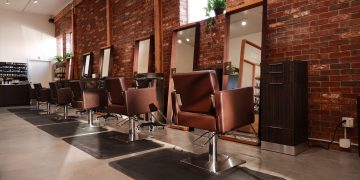
Palisade Gardens Roller Skating Rink
By Katherine Hon | Past Matters
A columnist’s favorite words must be, “Your article is the first one I read when I open the newspaper.” Although she did not leave her name or phone number, the reader’s charming voice message absolutely made my day. And since she asked so nicely to tell the story of the Palisade Gardens Roller Skating Rink, dear anonymous caller, this column is dedicated to you.

Of all the buildings along University Avenue in North Park, the Palisade Gardens Roller Skating Rink is the one remembered most fondly.
The long, two-story building with distinctive signage tower once occupied 2838 University Ave. at the northeast corner with Utah Street.
It was built in 1945 at the end of World War II by three brothers, Leonard, Robert and Mortimer Zlotoff. They were sons of Jacob Zlotoff, a Russian candy-maker who had come to the United States in 1903.
When the rink opened in 1946, it cost only 75 cents for an evening of skating. The price included clamp-on skates, but shoe skates cost an extra quarter.
Day skating cost 35 cents. The weekend dollar special, good on Saturday and Sunday, included admission, skate rental, a soda and a bus ride from an outlying neighborhood to the rink and back.
John Albert Wright, a World War II veteran of the 101st Airborne Division, operated the rink for 40 years until it closed in 1985. He helped revive the Toyland Parade after its break during World War II and introduced the sport of “rexing,” a style of smooth backwards skating with scissoring movements and hourglass patterns.
He extolled the benefits of skating, telling the San Diego Union in 1985, “It’s a clean, healthy sport. It exercises more muscles than swimming. Just moderate skating burns 650 calories an hour. And it’s a soother as far as hypertension. It does all the good things other sports do, and it’s easier on the body.”

Having “good old family fun” and skating to tunes like “The Happy Organ” by Dave “Baby” Cortez in the early 1960s are some of the memories shared by my anonymous caller. Many people who grew up in North Park have similar stories.
The book “Images of America: San Diego’s North Park” shows a rare Palisade Gardens interior photograph of contestants for Toyland Parade Queen roller skating in October 1966.
As late as June 1985, a Senior Olympics skating competition was held at the rink. But the popularity of skating was declining, and the cost to insure the business became larger than the income.
The rink closed with an event called “The Last Great Skate,” which Leonard Zlotoff described as “a peaceful end.”
In a 1985 interview, Wright said he was “making a buck up to the last day,” but he didn’t mind having Saturday nights off in his retirement.
In 1986, the City Directory shows Mary’s Doll World at 2838 University Ave. and in 1987, Rainbow Patio Deck is the business listed. The building was torn down in the late 1980s for the Palisades Pointe apartments.
A condominium/mixed-use conversion project completed in 2006 and named Palisade Gardens is now on that corner. The condominium development echoes the architecture of its predecessor with elements that resemble the signage tower.
Missing from the building is the original roller-skating girl neon sign that hung above the angled doorway. A hint that she survived the building’s demolition is in a May 24, 1990 Los Angeles Times article by Sarah Pattee titled, “Neon: The Lights of His Life: Hobbies: In five years, Mike Queen has managed to rescue and restore some of San Diego’s finest pieces of sign art.”
Among the signs mentioned being saved is “the animated roller-skating girl from the former Palisades Rink in North Park.” Pattee wrote, “Thanks to Queen … the feet on the roller-skating girl still flash and flicker.”
At the time, the restored sign was being stored in the warehouse of Queen’s company, Phoenix Construction, located in Kearny Mesa. At the end of the article, Pattee noted it took Queen months to get the 1947 roller-skater neon sign.
“First he searched city records to find the sign’s owner. When he finally did, it took weeks of talking before the owner trusted him enough to let the sign go — along with a dozen three-foot-wide neon stars from the rink’s ceiling.”
If you are still out there, Mr. Queen, the North Park Historical Society would love to thank you for saving a North Park classic neon sign!
—Katherine Hon is the secretary of the North Park Historical Society. Reach her at [email protected] or 619-294-8990.












Discussion about this post